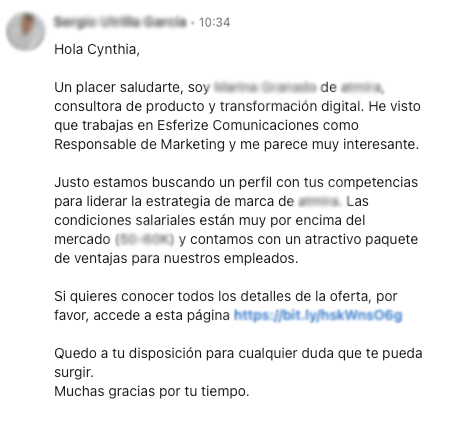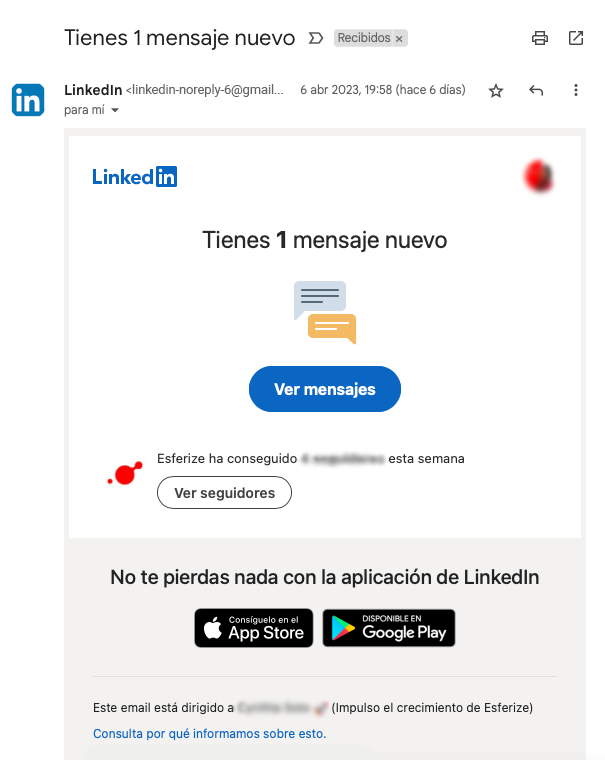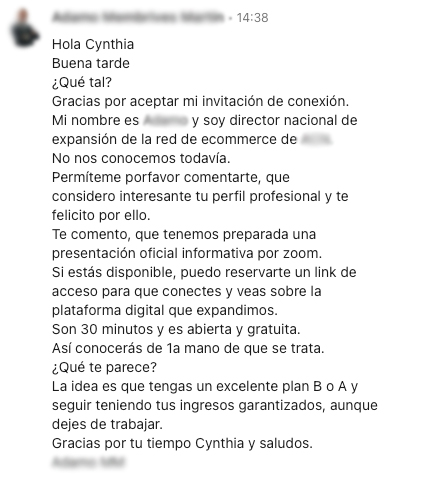In recent years, LinkedIn has become one of the most popular social networks in the professional sphere, with more than 740 million users worldwide. However, as with any online platform, it has also been a constant target of cyberattacks and scams in recent times.
Cyber-attacks and scams on LinkedIn can be varied and are often aimed at stealing personal information or login details, or even infecting devices with malware. Here are the types of scams and cyber-attacks that we, as LinkedIn users, may face:
Job offers
This cyberattack has been very fashionable in recent months and uses a really sophisticated method. What do these fake job offers consist of?
- An apparently genuine profile contacts us via LinkedIn chat to offer us a job related to our skills and with unbeatable conditions.
- After a brief conversation, the supposed recruiter provides us with a link to access all the details of the offer.
- By clicking on the link, the accessed device is infected by malware, without us being aware that we have been the victim of a cyberattack.

E-mail notifications
In this type of scam, we receive fake notification e-mails posing as LinkedIn, asking us to reveal sensitive information such as passwords or banking information.
Using social engineering techniques, the cyber attacker designs a seemingly truthful email. This phishing email includes a fake link that causes users to be presented with a fake LinkedIn login screen, prompting them to log in with their credentials. The hackers simply collect the data collected by the fake forms on the fraudulent page, such as passwords.

Ponzi or pyramid scheme
On LinkedIn, we can also find profiles that are completely genuine, but with malicious intent. We are talking about the Ponzi scheme, better known to all as a pyramid scheme. How to detect it?
- A director of a business network contacts us offering us to attend a business presentation. Generally, they will use the excuse that they find our profile interesting and that is why they have invited us.
- In the video call there are usually more listeners and we are presented with a unique opportunity that will make us a lot of money. In fact, by selling a little and attracting more people below us in the pyramid, we would already make a lot of money.
- After the meeting, he continues to write to us on a recurring basis, offering to answer our questions and urging us not to miss out on this bargain.

To protect ourselves from these scams and cyber-attacks, as LinkedIn users, we should exercise caution when interacting with unsolicited messages and emails. In addition, it is important to verify the authenticity of any job offer before providing personal information. Always check the sender’s email address and company domain to ensure they are legitimate.
It is also advisable to enable two-factor authentication on our LinkedIn account and keep our systems and software up to date to avoid known security vulnerabilities. If we suspect that we have been the victim of a scam or cyberattack on LinkedIn, we should inform the platform and change all our passwords immediately.
In summary, it is important to be aware of cyber-attacks and scams that may affect LinkedIn users. By following the security measures mentioned above, we can significantly reduce the risk of falling victim to these online threats and protect our personal information.





